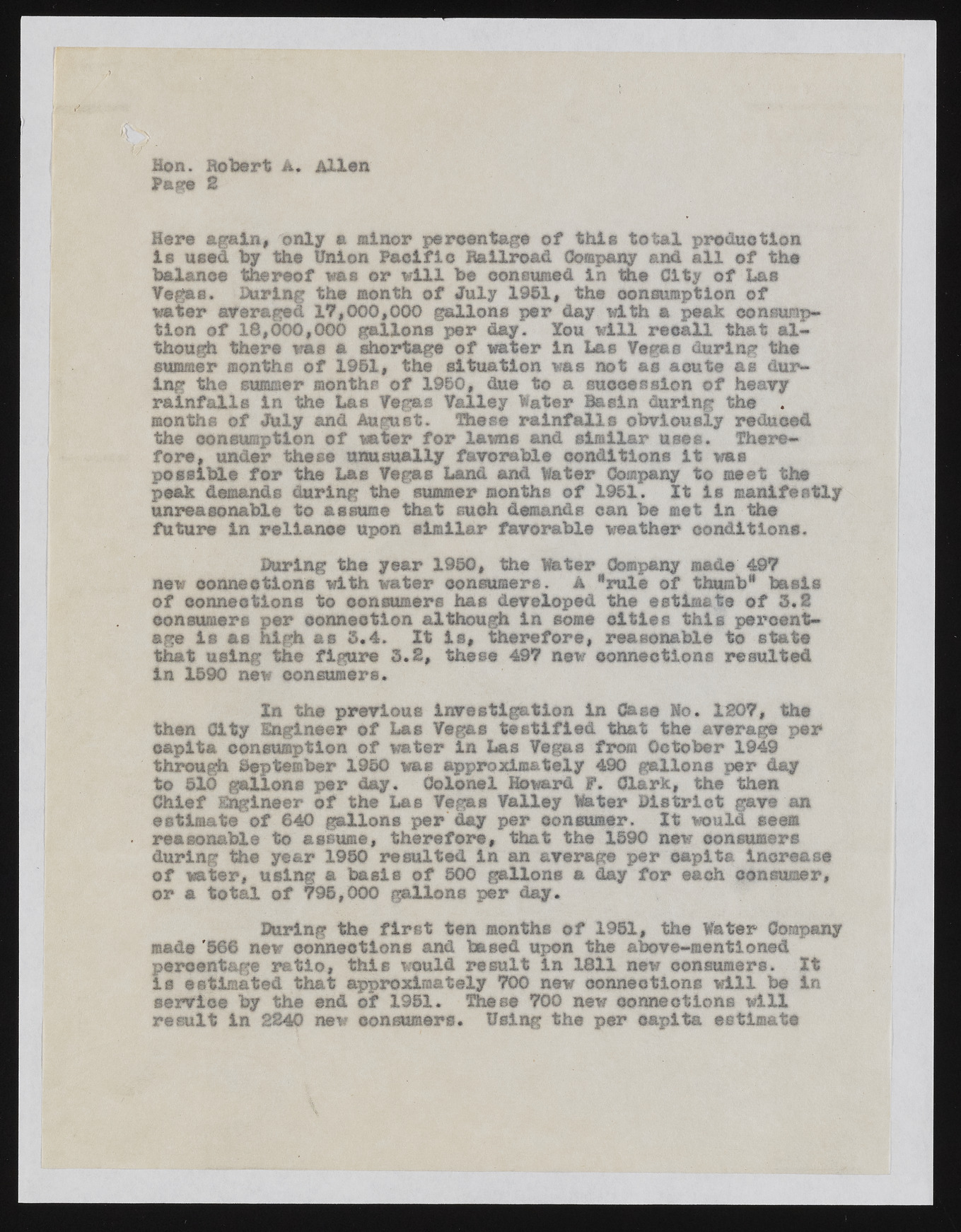Copyright & Fair-use Agreement
UNLV Special Collections provides copies of materials to facilitate private study, scholarship, or research. Material not in the public domain may be used according to fair use of copyrighted materials as defined by copyright law. Please cite us.
Please note that UNLV may not own the copyright to these materials and cannot provide permission to publish or distribute materials when UNLV is not the copyright holder. The user is solely responsible for determining the copyright status of materials and obtaining permission to use material from the copyright holder and for determining whether any permissions relating to any other rights are necessary for the intended use, and for obtaining all required permissions beyond that allowed by fair use.
Read more about our reproduction and use policy.
I agree.Information
Digital ID
Permalink
Details
More Info
Rights
Digital Provenance
Publisher
Transcription
Bon. Robert A, Allen Page 2 Bare again, only a minor percentage of this total production is used by the Union Pacific Railroad Company and all of the balance thereof was or will be consumed in the City of Las Vegas. During the month of July 1951, the consumption of nater averaged 17,000,000 gallons per day with a peak eonsump** tion of 18,000,00© gallons per day. You will recall that although there was a shortage of water in Las Vegas during the summer months of 1951, the situation was not as acute as during the summer months of 1950, due to a succession of heavy rainfalls in the Las Vegas Valley Water Basin during the . months of July and August. These rainfalls obviously reduced the consumption of water for lawns and similar uses. Therefore, under these unusually favorable conditions it was possible for the las Vegas Land and Water Company to meet the peak demands during the summer months of 1951. It Is manifestly unreasonable to assume that suoh demands can be met in the future In reliance upon similar favorable weather conditions. During the year 1950, the Water Company made 497 new connections with water consumers. A "rule of thumb" basis of connections to consumers has developed the estimate of 3.2 consumers per connection although in some cities this percentage is as high as 5.4. It is, therefore, reasonable to state that using the figure 3.2, these 497 new connections resulted in 1590 new consumer®. In the previous investigation in Case Mo. 1207, the then City Engineer of Las Vegas testified that the average per capita consumption of water in Las Vegas from October 1949 through Beptember 1950 was approximately 490 gallons per day to 510 gallons per day. Colonel Howard f * Clark, the then Chief Engineer of the Las Vegas Valley Water District gave an estimate of 640 gallons per day per consumer. It would seem reasonable to assume, therefore, that the 1590 new consumers during the year 1950 resulted in an average per capita increase of water, using a basis of 500 gallons a day for each consumer, or a total of 795,000 gallons per day. During the first ten months of 1951, the Water Company made '566 new connections and based upon the above-mentioned percentage ratio, this would result in 1811 new consumers. It is estimated that approximately 700 new connections will be In service by the end of 1951. These 700 new connections will remit in 2240 new consumers. Using the per capita estimate

